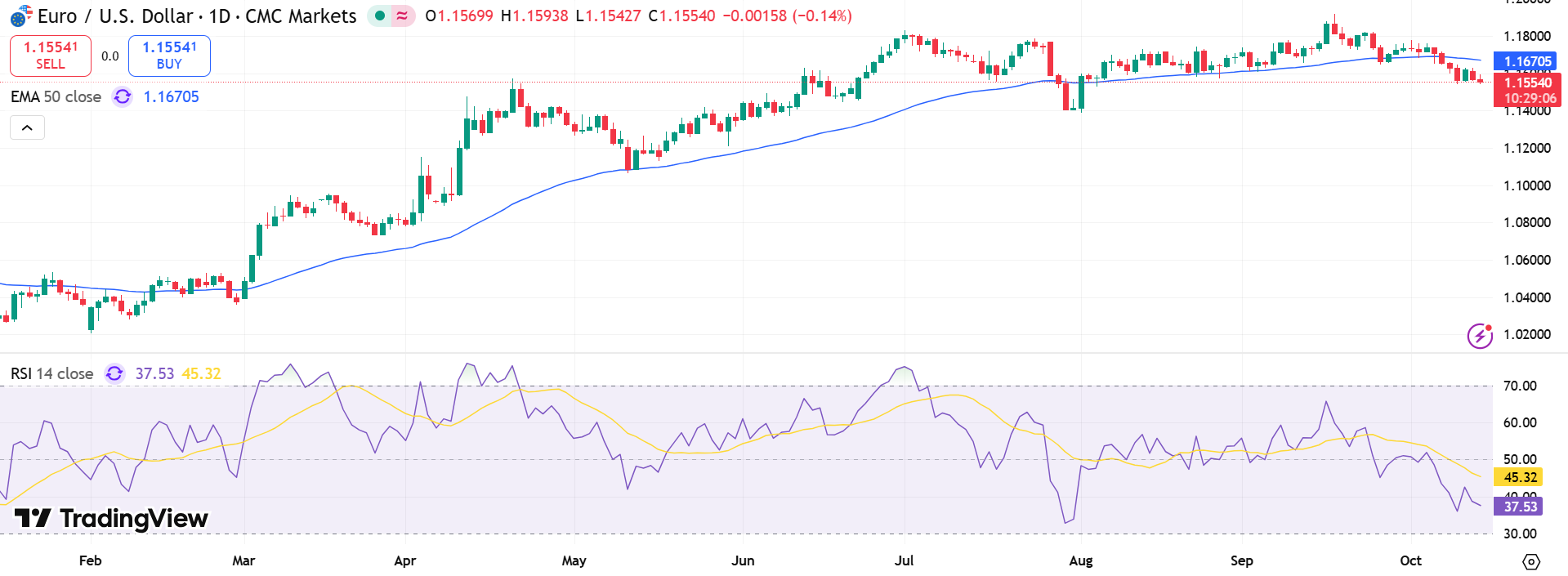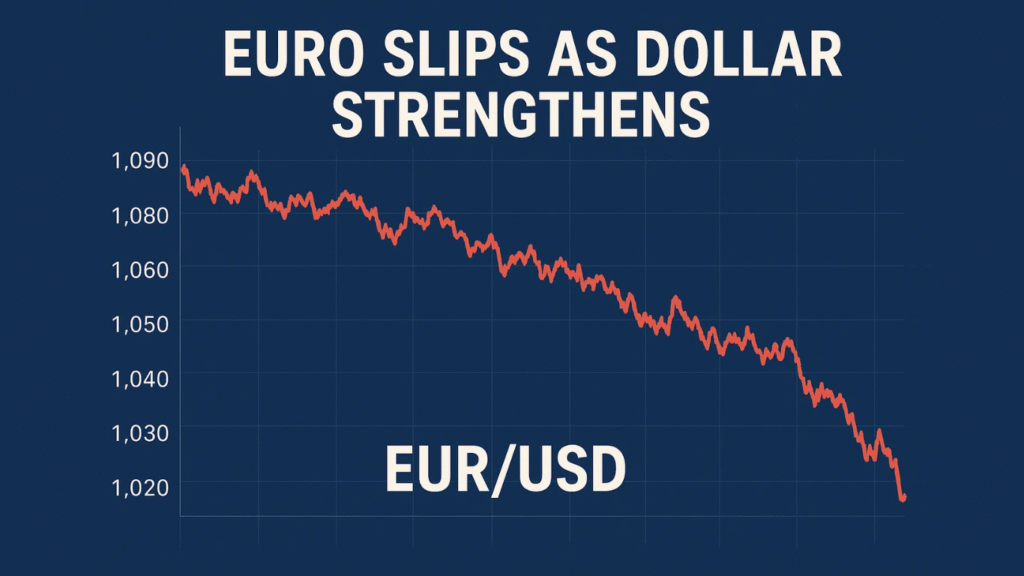The EUR/USD pair edged lower to around 1.1550 during Tuesday’s European session, as rising risk aversion lifted demand for the U.S. dollar. The move comes ahead of the closely watched German ZEW Economic Sentiment Survey, which could offer fresh insight into the Eurozone’s outlook amid persistent trade and policy uncertainty.
The pair’s weakness reflects a broader flight to safety, triggered by renewed tensions between the United States and China. On Friday, President Donald Trump reignited market jitters by threatening to impose 100% tariffs on Chinese imports. Investors quickly moved to the dollar, traditionally viewed as a haven during geopolitical stress.
Meanwhile, the U.S. government shutdown, now in its third week, continues to cloud the domestic economic outlook. Still, traders appear to favor the greenback over risk-sensitive currencies, especially amid lingering concerns about European growth.
Technical Indicators Signal Bearish Bias
Technically, the EUR/USD remains under pressure. The pair has fallen below all its key moving averages, with momentum indicators pointing to continued downside. On the daily chart, the 20-day Simple Moving Average (SMA) is trending lower near 1.1600, while the 100-day SMA—currently crossing below the 200-day SMA around 1.1700—confirms a sustained bearish setup.
Key technical levels:
- Support: 1.1540, 1.1500, 1.1460
- Resistance: 1.1600, 1.1630, 1.1670
Momentum indicators also remain in negative territory, with oversold readings suggesting limited short-term upside. The pair’s immediate support lies near last week’s low of 1.1542, a key threshold that could determine whether sellers push the euro toward the 1.1500 handle in coming sessions.
Analysts caution that any rebound toward 1.1600–1.1630 may attract renewed selling pressure unless the ZEW survey surprises significantly to the upside.
Economic Data and Fed Commentary in Focus

Beyond European data, investors will pay close attention to remarks from Federal Reserve officials for hints on future monetary policy. Philadelphia Fed President Anna Paulson is scheduled to speak at the National Association for Business Economics annual meeting, where markets expect discussion on inflation trends and rate-cut expectations.
Germany’s September Wholesale Price Index rose 0.2% month-on-month and 1.2% year-on-year, beating prior readings and suggesting modest pricing strength. However, the country’s current account surplus narrowed to €8.3 billion in August, down from €15.6 billion in July, signaling softer external demand.
Traders remain cautious as bond markets stay closed for Columbus Day in the U.S., limiting liquidity and amplifying volatility in currency trading. Overall, with the dollar supported by risk-off sentiment and technical momentum, EUR/USD may stay defensive until fresh catalysts emerge from European data or Fed policy commentary.


